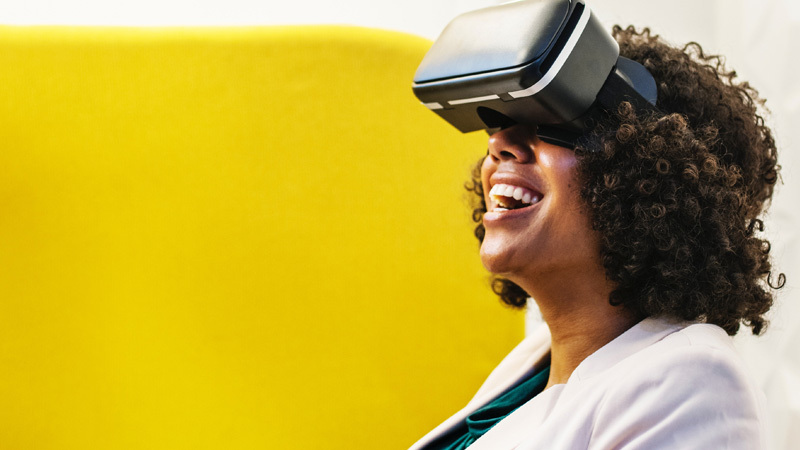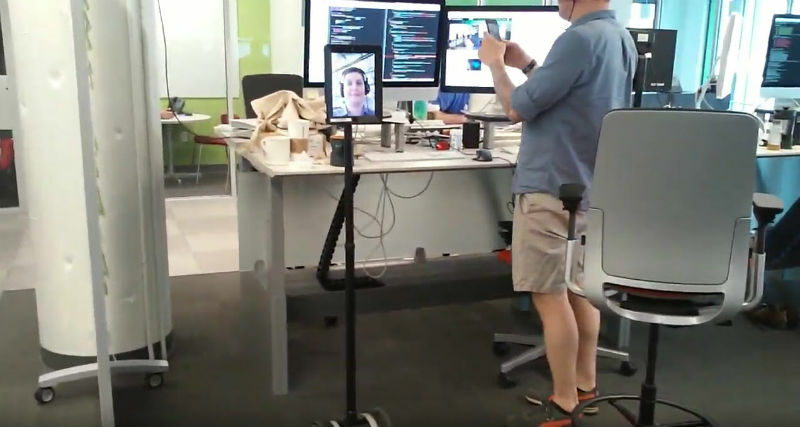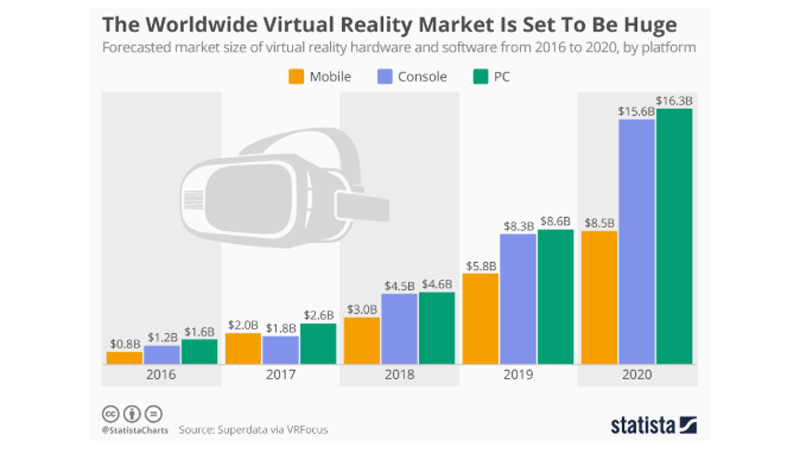Redefining Tech, Breaking Barriers for Women


I’ve experienced my fair share of hyped-up tech fads. None were a greater let down than the range of wearable-tech that included the 3D-glasses you wore in the cinema, Google Glass, the 3D glasses for television or any of the old school virtual reality (VR) products foisted upon us a few years back. Naturally, after so many disappointments, it’s hard to muster any excitement about new augmented reality (AR) and VR products on the market.
However, as I recently discovered, my reluctance is undeserved.
Before going any further, let me define both AR and VR.
Augmented reality (AR) is a form of VR where the real world is expanded or enhanced through the use of virtual elements, usually overlaying those elements on the view of the real world through the use of a visual device. A simple example of this can be the use of QR codes with smartphones to make a museum exhibition more interactive and informative.
Virtual reality (VR) is the name coined for any system that aims to allow a user to feel as if they're experiencing a particular experience through the use of special perception-changing tools. In other words, VR is an illusion of reality, one that exists inside a virtual, software-based world.
Dr. Anthony Basiel, eLearning research and development thought-leader with 20 years of experience in UK higher education recently joined me to review some of the latest AR and VR innovations on the scene. It is thanks to him I have a renewed appreciation for all things AR and VR because it was Anthony who invited me to an Augmented Reality Meet-up at the Microsoft Reactor hosted by Digital Jam.
When I first arrived at the event, I encountered what initially I labelled a gimmick but later discovered was touching, and in the end, incredibly useful.

Original image source: Sheldon robot is real
At first, this photo of a monitor on wheels reminded me of a storyline from The Big Bang Theory. However, I soon learned that one of the event organisers was unable to attend in person. This is her via a virtual representation – she attended the event from home using a remotely controlled, tablet-based robot. That’s impressive and a great way to showcase this technology’s power.
How AR can enhance the learning experience
To kick off the evening, Steve Dann CEO and co-founder of Medical Realities, demonstrated one of the ways AR can change the way we teach. He held a pack of playing cards, the type used to teach children the letters of the alphabet. He showed us all a card with the letter “m” and an illustration of a monkey. So far, so typical. However, thanks to AR, when you combine this card with a mobile device, the animal comes to life on-screen. You can even take it a step further and watch an interaction between two cards. This idea of using something very familiar and strengthening it through technology really appeals to me.
Steve also explained that AR/VR is going through re-invention phases. Now, thanks to cutting-edge technology, we have lighter devices with higher quality displays which will make a massive difference to how we use technology in education and training. He also spoke about why immersion, scale and 3D perception are critical enablers to stronger learning outcomes. These elements warrant further discussion, and if you are interested, I recommend Daniel R Mestre’s Immersion and Presence.
The role of VR in education
A recent study of the Chinese education system is highlighting the fundamental role VR can play in boosting student engagement and knowledge acquisition. In one example, students who used VR had a passing rate of 99%, while those in the non-VR group had a 45% passing rate. Why VR boosts learning we do not know, but I wonder if it has to do with how our brains absorb information.
What I do know is that Assassins Creed Brotherhood delivered such an immersive, story-based game experience that when I did eventually get to visit Rome, I did not need a map or a tour guide to move around the city.
Epistemology is a branch of philosophy that investigates the origin, methods and limits of human knowledge. If learning is a consequence of our perception of ‘analogue reality’ information and events, and by analogue reality I mean a virtual or augmented reality as a computer-generated environment or space, then the ‘real world’ is our analogue experience in the face-to-face world. A twist you might say on Descartes’ “I think – therefore, I am,” to “I link, therefore I am.” While how we define “reality” is a metaphysical debate for another time, for now, the question is how this new reality will impact learning?
Telepistemology means “to know something at a distance,” and I think its role in the acquisition of knowledge will grow as technology, especially AR and VR, continues to influence the way we approach teaching. Just imagine the possibilities. Students fully immersed and feeling like they are actually at the Battle of Bastille, in a World War One trench or standing with Albert Einstein discussing the theory of relativity. Even if the students become distracted and look around, learning is still occurring.

Original image source: The Worldwide Virtual Reality Market Is Set To Be Huge
Current applications of the educational potential of AR and VR have so far focused on traditional didactic teaching and learning models. However, creative education expert Christian Long from VR Immersive Education thinks the uses and functions of VR in teaching are gaining traction. He believes the traditional set up of the 2D classroom environment while the brain craves a 3D space is preventing mind growth.
So why are AR and VR not more prevalent in our schools? Part of the reason is cost; an Oculus Rift headset runs at around £450. The other reason is a more human one; namely that educators are slow to embrace change on a large scale. Look how long it took to move from analogue to digital media in higher education institutions. Plus, it was quite recent that organisations finally made a move from face-to-face seminars to online, text-based discussion forums and webinars. I believe the next stage, immersive simulations and 3D webinars, is coming soon and our role-playing scenarios will occur from the ‘inside-looking-out’ virtual classroom. A move into a virtual world will result in a tremendous amount of change. Apart from the savings from reduced travel, there is the psychological impact of only meeting through an avatar.
I am looking forward to seeing how 3D space environments can encourage a stronger learner connection. I believe the education and professional sectors need to embrace this medium and over time, and I hope to see technology bring about change in how we test someone’s knowledge gap.
Christopher Sly is a Solution Principal, IT & Digital at Skillsoft EMEA.
We will email when we make a new post in your interest area.

